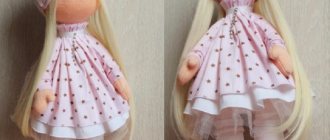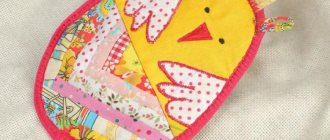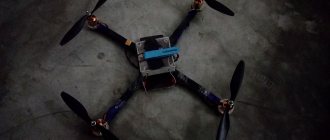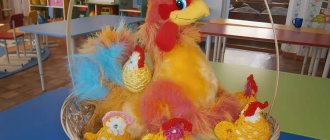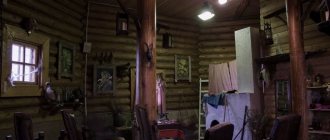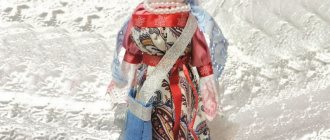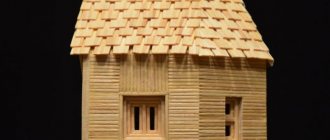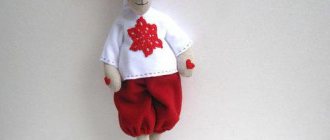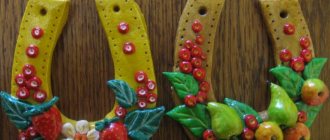“Who” is Tilda, and where did she come from? The Tilda doll is very popular today, and this is not the name given to a specific toy girl, but to a style, a whole line of toys sewn together in one concept. That is, the Tilda doll is a doll completely sewn from fabric. It was invented by a certain Tony Finager (Norway) back in the 90s of the last century.
According to the author's idea, she wanted to come up with some kind of “home” toy to guard the hearth from the simplest materials using a simple technique. And the name of the doll was not chosen by chance. The secret lies in the fact that their family traditionally chooses short names that certainly begin with the letter “T.” And then, the author of the world-famous doll simply wrote down all the names she knew starting with the letter “T” and chose the most pleasant one for herself.
It is interesting to note that later “Tilda” became nothing more than a trademark. And Toni Finanger even had her own small store, on the shelves of which were the dolls themselves, as well as instruction books with patterns for making them. But nevertheless, over time, in the world of needlework, this name nevertheless became a household name - this is what all textile dolls of this style began to be called.
As already mentioned above, tildes can be very different: these are animals, girls, fairies, Snow Maidens or Santa Clauses, and also stars, snails and even plants and much, much more. The author of this direction of applied art, T. Finager, when creating his “wards”, prefers delicate bed colors - lavender shades, soft pink, turquoise, cream and powder. Today, these colors have become in demand, gaining great popularity in the fashion world.
In general, it’s absolutely true that Tilda’s style can be described as simple, and perhaps naive or even rustic. But at the same time, the products turn out to be somehow very cozy and homely. The minimalism of the product is clearly visible in the design of the face - it is indicated by only two button eyes and slightly toasted cheeks. Maybe this is what creates the doll’s unique character.
At the same time, the facial expression becomes so charming that it can captivate both children (despite the fact that the toy is still more decorative than functional) and adults. Yes, perhaps the main idea of creating a tilde is a return to a carefree childhood, filled with kindness and magic, smiles and gifts from fairy fairies.
Distinctive features of the Tilda doll
A small tilde doll with its subtle presence will certainly make the house more comfortable and romantic. Why not sew it yourself. Further in this article, the technique of making this toy is described in detail with a list of materials and tools necessary for its creation and ways to decorate it and make it even more interesting.
Before starting the master class, I would like to briefly emphasize the distinctive features of the Tilda doll, which together are its calling card.
Firstly, to create a toy, you should choose exclusively natural canvases, decorated with rustic motifs or country style prints (flowers, stripes, checks). By the way, needlewomen often take ordinary cotton and give it a cozy creamy shade using tea or coffee solutions.
Secondly, when choosing a material for a doll’s hair, choose regular knitting yarn or decorative “Ivy” type - it will look impressive.
Thirdly, when working on the face of an almost finished doll, do not forget about its characteristic features: black dotted small eyes and a light blush. All.
To apply it, you can use either regular blush or a pencil - sharpen the pencil directly over the place where the blush will be applied and slightly blend the resulting pink dust.
Well, the main thing is that you can sew a doll as you like - either by hand or by machine; The main thing is that the work is fun.
See also:
- How to sew an interior doll?
What else will you need for work?
Since the distinctive feature of the tilde is the presence of various small parts and accessories, to create them you will need all kinds of sewing accessories. There is room for imagination here. In your work you can use:
- lace;
- ribbons;
- beads and seed beads;
- wire;
- cords;
- buttons.
To create voluminous hair, you can purchase ready-made artificial strands or make them yourself from felting wool or regular knitting threads.
The fittings used are delicate, natural tones.
Necessary materials
In order to sew a classic tilde doll at home you will need the following:
- a set of tailor's needles;
- textile;
- threads in the color of the fabric;
- a simple pencil and tracing paper (for patterns);
- tailor's scissors;
- material for stuffing (at your discretion, holofiber, cotton wool, padding polyester or something else);
- separate fabric, as well as beads for sewing an outfit for the doll;
- yarn for hair (you can use wool).
That's probably the whole arsenal. But let's talk a little more about the fabric. The fabric must be natural: cotton, linen, wool, knitwear, fleece. When choosing fabric, pay attention to the following features:
- density. If the material is sparse and loose, the product may simply fall apart;
- structure. It should be uniform, without inclusions of threads of higher density. Otherwise, the doll will look sloppy in the end;
- rigidity. Do not opt for hard fabric, it will be very inconvenient to work with, it will be difficult to turn inside out, creases will appear, and, in general, the doll will look rough;
- elasticity. Elastic fabric irons well, and this is important in tailoring.
History of the toy
Of course, the tilde can hardly be called a functional toy, it is more related to interior dolls, but I made my first tilde as a gift for a sweet girl of three years old, and, as far as I can judge, I was right with the gift - toys grow with children, and I had to I have already restored the doll several times.
In modern culture, the tilde occupies a special position. Let's start with the fact that this doll, it must be said, is not new - Norwegian designer Toni Finnanger invented it back in the nineties. As the designer tells in her interviews, she planned to create a cozy home toy that would appeal to both children and adults. She used natural fabrics for this, and the manufacturing process was as simple as possible.
At first, the designer made one doll, and then things got busy, and after some time, Finnanger opened a store where you could buy a doll, patterns and books about this amazing toy. Over time, various animals began to appear, which were designed in a similar style.
Sewing a trouser suit for a doll
In order to make the top part of the costume, cut out a small piece of fabric, 10 by 20 cm (don’t forget about the plus allowances). Next, you need to fold this blank in half lengthwise and stitch the open long edge. Now turn the piece right side out, make a couple of stitches across it with your hands and gather the fabric by pulling the thread. We've got the top. Secure it to the doll's body with tailor's pins and then sew it on.
See also:
- How to make a motanka doll?
Boho style clothes
Boho style allows you to combine lace and leather, ethnic and classic, bulky shoes and frivolous floral chintz. Such elements, collected together, create an image of comfort. For an interior doll, this is what you need. There are several stylistic trends of boho: classic, eco, hippie, vintage.
Skirts must be full, with a lot of frills. The main measurement for them is from the waist to the toes of the tilde. Boho clothing patterns are only required to create sleeves and bodice, while skirts are cut directly on the fabric. The doll is placed on a piece of fabric, the waist and the widest part of the torso (where the legs are sewn) are measured, and connecting lines are drawn. Allow an allowance of one centimeter at both ends. You will need two such parts. The side seams are sewn together, frills made of guipure, lace, and chiffon are sewn on.
The back of the skirt can be fastened with a hook or button so that it can be removed. The jacket is made according to the principle of a vest with one-piece sleeves. They can be decorated with long lace cuffs or simply tucked up. Don't forget to give the doll a large handbag.
Sew wings
First, we transfer the outline of the wings to the fabric folded in half (the right side of the fabric inward). We sweep away the parts, cut them out taking into account the allowances, turn the resulting wings inside out, and iron them. For beauty and to designate the feathers, you can lay several stitches on the front side. And then we stuff the parts using a thin wooden stick. We sew up the holes that were left to stuff these parts of the doll, and, in fact, we sew them to it.
Well, it's time for a hairstyle for the tilde doll. For a wig, you must first sew the yarn-hair crosswise - you will get a parting. Then sew this wig to the head and arrange the hair in the desired hairstyle. You can also sew some cute hat.
Step-by-step instruction
The following is a master class and basic recommendations for those who are just starting the exciting making of a Tilda doll. If you don’t know how to sew a Tilda doll, stock up on materials, ideas - and start creating!
How to sew Tilda's torso
The bodies of some Tildoches are cut out along with part of the dress. First of all, two weasels are sewn together - the body of the toy and the clothes (the seam is carefully ironed). Then the part is outlined, aligning the fabric seam line with the contour indicated on the Tilda doll pattern. Be sure to check that all cut components are present. The part is not cut out!
Parts of Tilda's body are quite small, the seam allowances are also narrow - about 0.5 cm, and sometimes less. During stitching, sections may fall off, which will reduce the quality of work. Therefore, first sew the parts of the toy along the outlined contours in the canvas, without cutting. Be sure to leave the turning hole unstitched. Before sewing on the machine, remove the pins, and then remove the basting thread. Iron the stitched parts. Now you can cut - the cuts will be neat.
Another secret is to turn out the narrow parts of the body and at the same time fill them with synthetic batting. Use a disposable sushi chopstick. This will ensure that the legs and arms are filled evenly.
If the limbs must bend at the elbows or knees, then these parts should be filled with synthetic padding or other material up to the point of bending. Sew this area right through and fill further.
Some dolls will sit. Therefore, do not fill the legs tightly in the hip area - after sewing they will bend better.
If the future toy must stand or sit confidently, its base must be filled with a heavy bulk component:
- peas;
- wheat;
- coarse salt.
After filling the part (arms, legs), sew the unsewn part with a hidden seam. Beginning needlewomen who have not taken into account the recommendations for the color of fabric for Tilda's body can easily paint an already sewn white doll with their own hands using natural means - strong tea leaves or coffee.
50 g of inexpensive coffee (it is the cheap product that gives the most stable color) and 1 tbsp. l salt per 1 l water. Keep the doll in the solution for 15-20 minutes, then rinse a little in cold water, wring out and dry. We get a very delicate attractive shade.
The tea solution is made more saturated - 5 spoons of cheap tea per ½ cup of boiling water, a couple of drops of PVA glue to fix the color. Further according to the previous description.
How to do Tilda's hair
The hair of a typical Tilda lady is voluminous, so for a loose hairstyle it is better to take plush yarn. But for some hairstyles it is permissible to choose any thread of the desired color, even floss.
Stretch a thin soft wire through the doll’s head, which will allow you to later braid the hair with threads.
Or you can do it much simpler - sew measured and cut strands of thread to the head of the toy, starting from the parting. To make the hair fit, attach the strands again at ear level. Next, shape your hair as you wish. For example, you can make lush braids.
How to design Tilda's face
All Tildochkas are characterized by eyes in the form of small black dots. Embroider them with any thread, French knots or satin stitch.
The traditional blush for young ladies is applied with cotton swabs. Use dry blush, acrylic paint or red pencil. The mouths of these dolls are not embroidered.
Clothes and shoes for Tilda
Clothes for Tilda are made from any material - silk, tulle, organza, calico, fleece, denim, knitwear, chintz and the like. It is recommended to choose fabric with a very small pattern - stripes, checks, polka dots, flowers or plants, abstraction.
For decoration, select beads, lace, ribbons, braid, and small buttons.
Shoes for Tilda can be high-heeled shoes made of cork, cardboard or wood. The felt option also looks harmonious. But the most acceptable are shoes with flat soles, for example, ballet shoes according to the proposed life-size pattern. Sew a ribbon or flower to the shoes, glue beads or rhinestones.
Textile gift dolls are often scented. There are different ways to give Tilda a pleasant smell - adding mint, lavender, basil, jasmine, cinnamon, vanillin to the filler. You can put a ready-made sachet bag into the souvenir toy or simply rub the wet body with spices.
Another method is to drop a little aromatic oil (lavender, lemon, orange) onto plain coarse sea salt. The prepared salt is added to the filler. The toy will smell for quite a long time - about a month at a distance.
When making a life-size Tilda as a gift for a loved one, you can sew a heart-shaped button to her body or insert a small Valentine’s card with good wishes into the finished doll.
Knitted hat for Tilda
Choose hook No. 2 and yarn that matches it in thickness. The hat is knitted in the round using single crochets (let's call them sc) and double crochets (dc). So, cast on 24 air loops (let’s shorten this designation to ch) and close them into a ring with a half-column.
- 1st row: 1 ch, 23 sc in the ring, close the row with a half-column.
- 2nd row: 2 ch of lifting, then 1 dc in the first loop of lifting, then 23 dc in a circle in each lower sc, close with a half-stitch in the second ch of lifting.
- Row 3: repeats the second row.
- 4th row: start, as in the two previous ones, before dc in the first lifting loop, then cyclically perform 1 dc, skip one, then perform 2 dc and skip one.
When finishing knitting, pull the cut thread through several knitted posts - this way you will hide it and secure the knitting.
Before sewing on the hat, don’t forget to put a few strands of the doll’s hair in it so that the fabric of the head does not show through the headdress. The hairstyle can be done in the form of two large buns of hair, symmetrically placed on both sides of the knitted hat.
Make a face.
Knitting legs
Using the color that we chose for the shoes of the future doll, we cast on 4 air loops and connect them into a ring with a half-column.
- 1st row: 8 sc in the ring.
- 2nd row: 8 sc.
- 3rd row: perform 6 sc, and then knit 2 hdc (they indicate the heel).
- 4th row: repeat the third row.
- Next, change the color of the working thread to flesh-colored.
- We knit the same rows 5 and 6: 8 sc.
- 7th, 8th and 9th rows: 9 sc.
- 10 – 12th rows: 10 sc.
- Then we change the flesh color to the one in which the pantaloons will be made, and knit 10 sc up to the 14th row inclusive.
- Row 15: 11 sc.
- Then do a constant addition like this:
- Row 18: 12 sc.
- 21 row: 13 sc.
- 24 row: 14 sc.
- Row 30: 15 sc.
- Then from the 36th to the 41st rows knit 16 sc.
Finish knitting. The legs are ready.
We knit the head and body
The doll's head and body are knitted together, representing one piece.
- Take the threads that will be used to dye the tilde pantaloons and cast on 33 air loops. Close them in a circle with a half-column.
- From the first to the fifth rows, knit 33 sc in a circle, without adding or subtracting.
- In the 6th row, decrease one stitch every nine stitches, you will get 30 sc at the end of the row.
- Save 30 sc up to the 9th row inclusive.
- In the tenth row, decrease one stitch every 8 sbn, you get a total of 27 sbn.
- 11th and 12th rows: 27 sc.
- Change the color of the threads to flesh-colored and continue knitting:
- Row 13: 27 sc.
- In the 14th row we decrease one stitch after seven knitted stitches, we get 24 stitches.
- We knit 24 stitches for 2 rows.
- 17th row: we decrease after 4 sc, in total we get 20 columns in a row.
- Four rows of 20 columns.
- In the 22nd row we perform a cycle: two sc on one base loop, 9 sc. At the end of the row we already have 22 sc.
- From 22 to 24 rows: 22 sc.
- Change the flesh color to the color of the clothes (dress).
- Row 25: add one stitch every 10, getting 24 sc.
- We do not add or subtract two rows.
- We return to changing to flesh-colored threads and knit the 28th row without changing the number of loops.
- Row 29: Decrease 4 times after every fourth sc, reaching 20 stitches.
- Row 30: decrease, knit three sc and repeat this cycle until the end of the row (control – 16 sc).
- 31st row: cycle of the previous row, but every 6 sbn (total 14 sbn).
- 32nd row: reduce the number of sc to 12, making a decrease after every 5th column.
- Row 33: 12 sc.
- Row 34: one increase, three sc and so on until the end of the row (15 sc).
- Two rows of 15 sc.
- Row 37: add one stitch at a time after knitting 4 sbn (18 sbn in total).
- Five rows of 18 sc.
- Row 43: decrease through one column, 12 sc in total.
- Row 44: knit 2 sc together 6 times.
We finish knitting.
How to choose the right fabric
To sew a Tilda toy, it is important to choose the right materials. The body is made of fabrics with a dense and smooth structure. It is better to give preference to textiles that are as close in shade to the color of human skin as possible. If you are sewing a figurine of a mouse or a bunny, then here too you should choose a color of the fabric that is close to natural.
The most commonly used fabrics are:
- various types of cotton and linen fabric;
- knitwear;
- gabardine;
- fleece
Clothes can be sewn from absolutely any materials you like. Beginners may not have to specifically purchase pieces of expensive fabric to make a doll, but rather sew an outfit from scraps that they have on hand.
The only thing that can disturb the harmony of the outfit is a large pattern. Although for Tilda of a large size this may not be a problem.
Fabrics with small prints are used for clothing
We knit wings
The wings of a tilde angel are not knitted in a circular manner, but in the next row: we finish one row, turn the knitting over and continue working in the other direction.
We cast on 16 air loops.
1st row: 4 sc, one increase of sc, one addition of hdc, 4 hdc, 5 dc. In total we get 17 columns.
2nd row: air loop for lifting, 10 sc, increase, 6 sc.
3rd row: we knit only behind the back wall of the columns, this is important. 5 sc, one increase, 3 hdc, one increase hdc, 2 hdc, 5 hdc, two double crochets (work in the penultimate loop). For control, we mean that our row already has 20 columns.
4th row: after 12 sc, add one and knit another 7 sc.
Row 5: knit again behind the back wall. 5 sc, increase one single crochet, 3 hdc, increase one hdc, 9 dc, finish, as in the previous row, 2 double crochets in one loop.
And now, let’s explain why we knitted the columns on the back walls in the 3rd and 5th rows - in order to knit them in the second wing, clinging to the front walls.
For beauty, you can tie the upper edges of the wings and rows of half-loops with a “crawfish step” pattern, of course, choosing a contrasting color (for example, the one you used to knit the dress for this doll).
Knitting a heart bag
Our doll will carefully hold the heart-bag in her hands.
Take brightly colored threads and cast on 6 chain stitches. Connect them into a ring.
1st row: 12 sc in the ring.
2nd and 3rd rows: 12 sc.
Break the thread, we have knitted one side of the future heart. Using a separate thread, tie the second side in the same way. Then connect these halves and continue knitting in the round. Make decreases where the sides of the heart were connected. Specifically, each row involves 2 decreases. And in order to give the handbag a “tilde” style, lengthen it - do not add in every fourth row.
Building a base pattern: back
The order of constructing the back pattern:
- Draw a rectangle with a length equal to Cr and a height equal to Dst.
- Measure the center line and mark the intersection at the top and bottom.
- From the upper intersection point, ¼ Osh is set aside in both directions.
- From the upper intersection point, two millimeters are laid down. Draw an arc through this and the two previous points. This is the sewing line for the collar.
- Five millimeters are laid down from the upper intersection point. Draw a horizontal line. The highest point of the sleeve is laid on it, retreating 1.8 cm from each point of intersection of the collar sewing line with the upper horizontal line of the rectangle.
- From the lower point of intersection of the rectangle with the central line, 2.2 cm are laid in each direction.
- From the lower point of intersection of the rectangle with the central line, mark the measurement Br and draw a horizontal line. Connect the points where it intersects with the vertical lines of the rectangle obtained in step 6.
- Connect the points obtained in step 7 and step 5 with an arc. This is the sewing line for the sleeve.
Types of dolls
It was already said above that a tilde doll is considered only nominally, but in general a tilde can be a hare, an apple, or a snail. With such a variety, which product should you choose? Our recommendation is to create themed dolls for each holiday. And why not, because this is an excellent way to surprise your guests. In addition, tildes presuppose the presence of decorations for themselves, so you can finally show your friends and relatives original little things that would escape attention in a simple everyday setting.
So, you can sew a whole garland of tilde hearts or even show a whole celebration scene. Let's say, sew a whole family of dolls, and with their help create a scene for celebrating some family celebration.
A huge number of modern mothers create dolls for babies with their own hands. Tilda makes children very happy and is fun to play with. And besides this, which is important for both mother and child, the tilde is not at all dangerous and is made of natural, non-toxic materials.
Mothers with a rich imagination will probably come up with an interesting game for their daughters and sons with such dolls. For example, you can sew different animals and thus create a cute menagerie. Fill them with cereal, and then the toy will also work to develop the child’s fine motor skills.
See also:
- How to beautifully photograph your work?
Simple trouser pattern
A huge advantage of sewing clothes for tilde rag dolls is that patterns can be pinned directly on the doll, since pins fit well into it. Using the jacket pattern, you can also sew a dress. There is no point in building a full skirt from a pattern. Having measured the waist and hips, it is easy to cut it out of the fabric. For folds, leave a three centimeter allowance.
It is better to sew trousers for a tilde that do not reach the waist, they will not suit her. Small models sitting on the hips are her option. It’s easy to sew them; you don’t need to make a drawing for this. By placing the doll on the fabric folded in half, measure the length of the trousers. They should reach at least to the wrists. If it's a little higher, it's okay. The width of the trousers is measured at the bottom of the torso, where the legs are sewn. This is the widest part. An allowance of one centimeter is given for freedom - 0.5 cm on each side. The place where the legs are sewn is measured - this is the beginning of the trouser legs. Cut to this point.
Leave an allowance of two centimeters for the hem and elastic at the waist. The bottom edge of the trouser legs can simply be hemmed with a stitch, or you can insert a lace. For simple trousers, skirts, and vest dresses, no drawings are made. Simply place the doll on the fabric and measure the control points, then connect them. This is how clothing patterns for a tilde are made in full size.
Useful tips
To make the product even more interesting, you can add functionality to it. Drop aroma oil inside the Tilda doll during its manufacture, and you will receive an original exclusive sachet.
If you put a bag of aromatic herbs wrapped in several layers inside the tilde, you will get an anti-stress doll; it can also be used as a sleepy pillow.
In general, tilde dolls are wonderful in everything: from the work on them to their appearance and the mood that they will create for their owners if the latter get a little creative with the use of the toy.
It is also very important that the doll will always look wonderful, even if you made any mistakes during its manufacture. After all, the whole charm of these products lies in some awkwardness and slight negligence, which, by the way, only emphasize that the dolls are handmade items. Or maybe someone will be so inspired by working on tildes that they will make it a tradition to give them to loved ones, emphasizing their love and reverent attitude towards them.
Manufacturing process
So, let's start our Tilda master class. I am sure that absolutely everyone can make a do-it-yourself tilde doll for beginners, you just have to want it. How the whole process should go:
- we make life-size patterns;
- cut the fabric;
- sew all parts of the body;
- sew a doll;
- doing hair and clothes;
- draw a face and select accessories.
